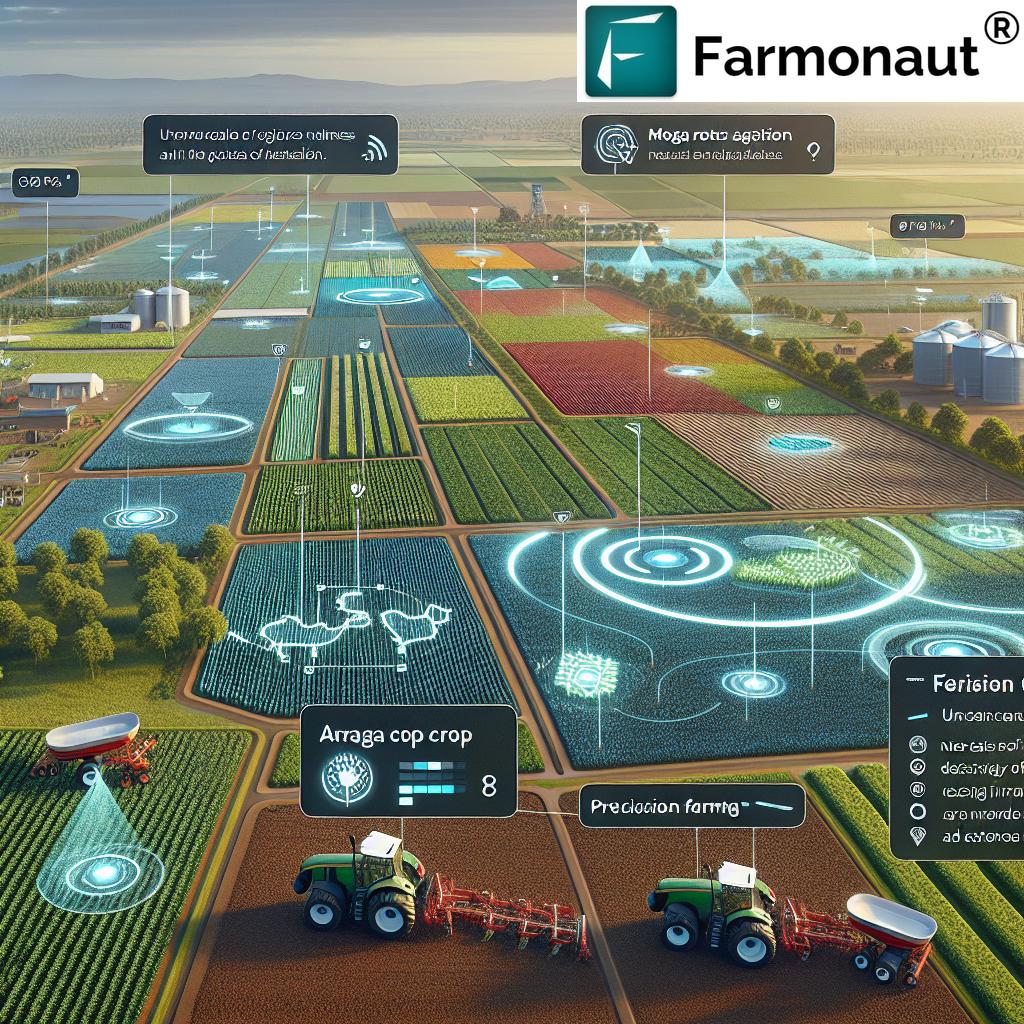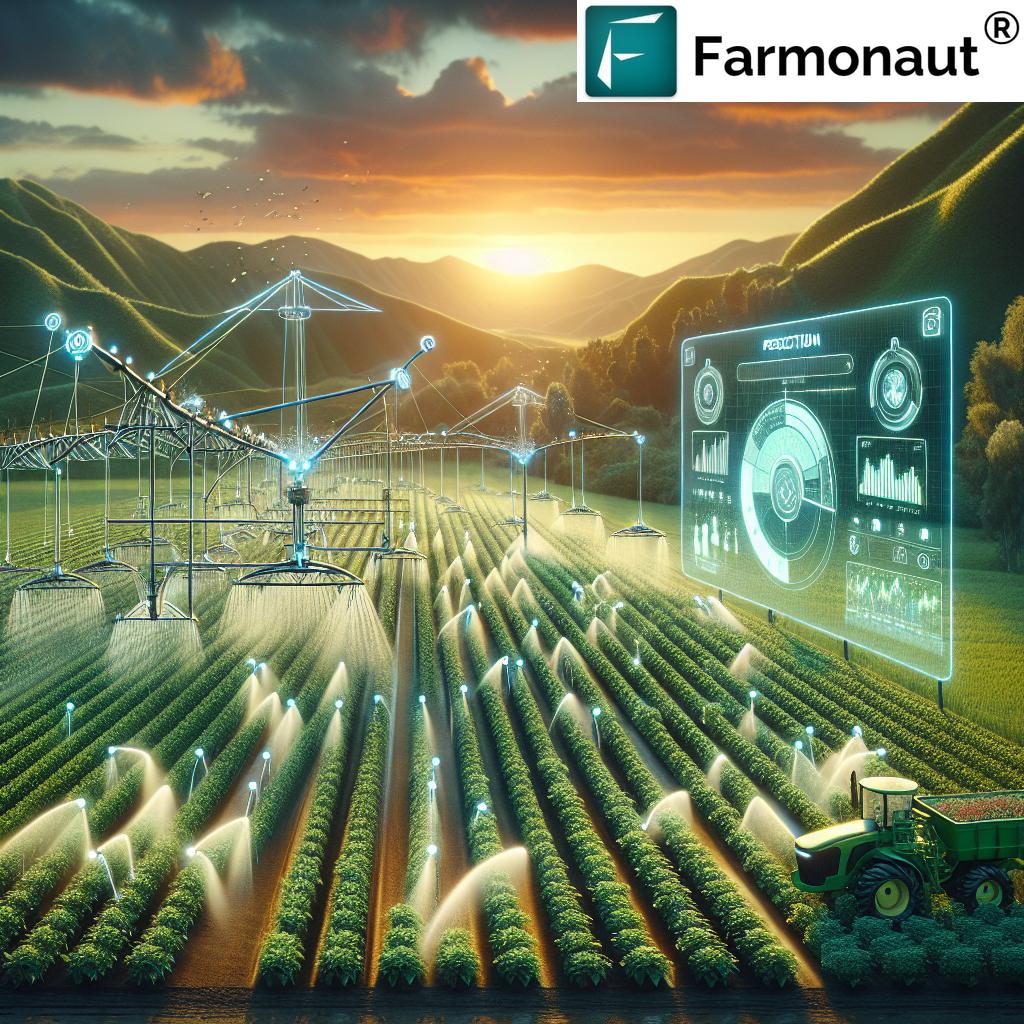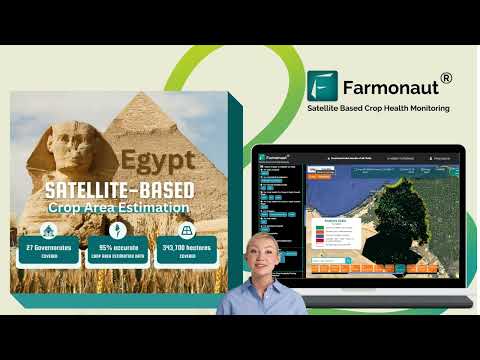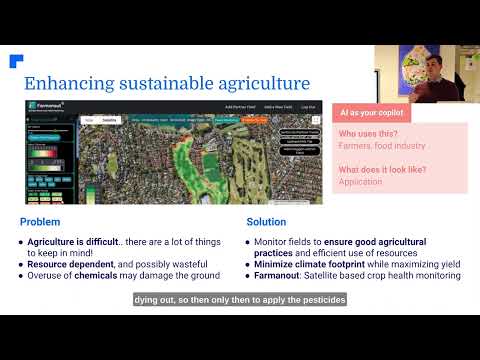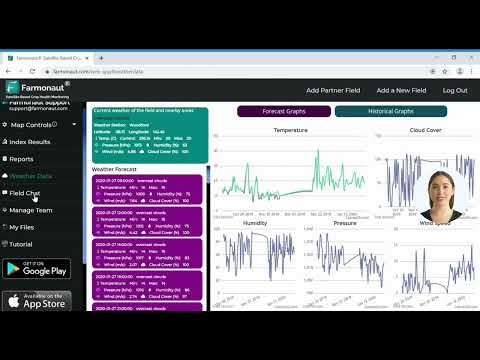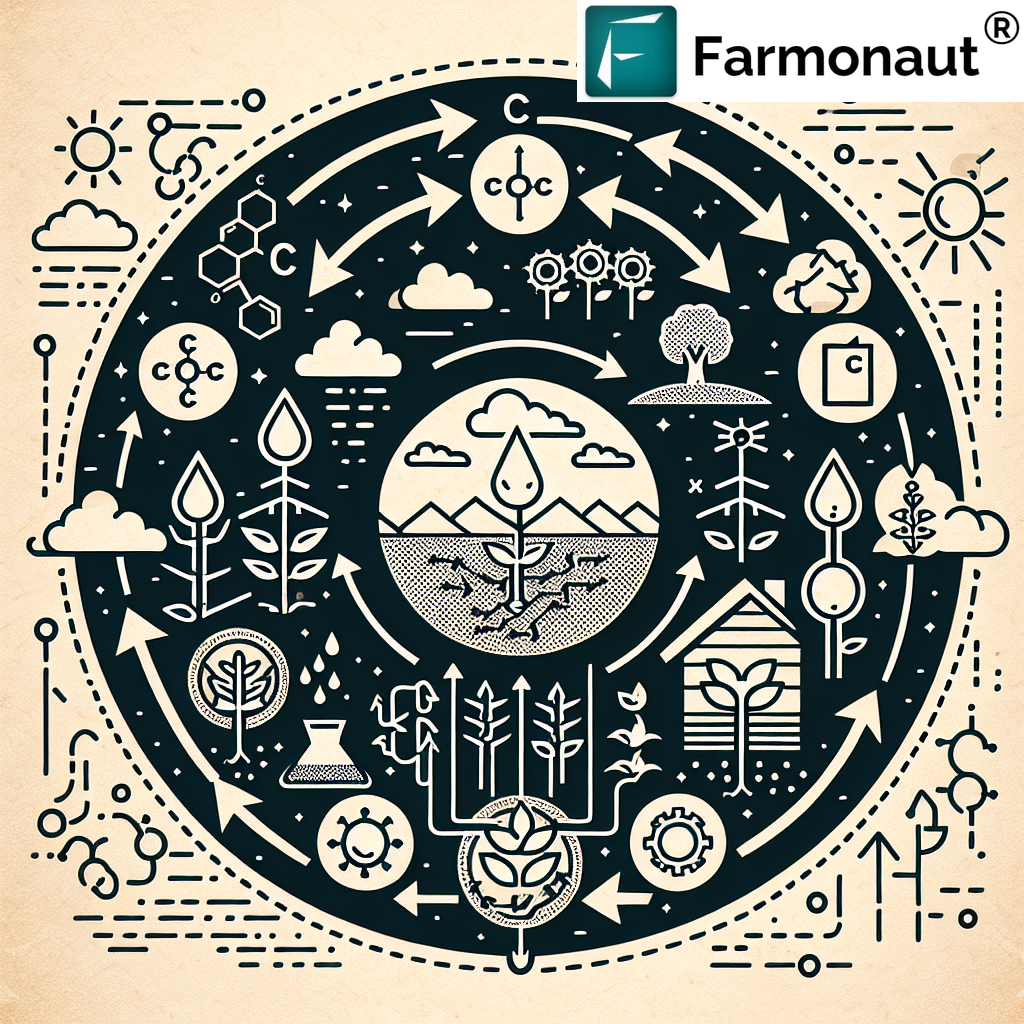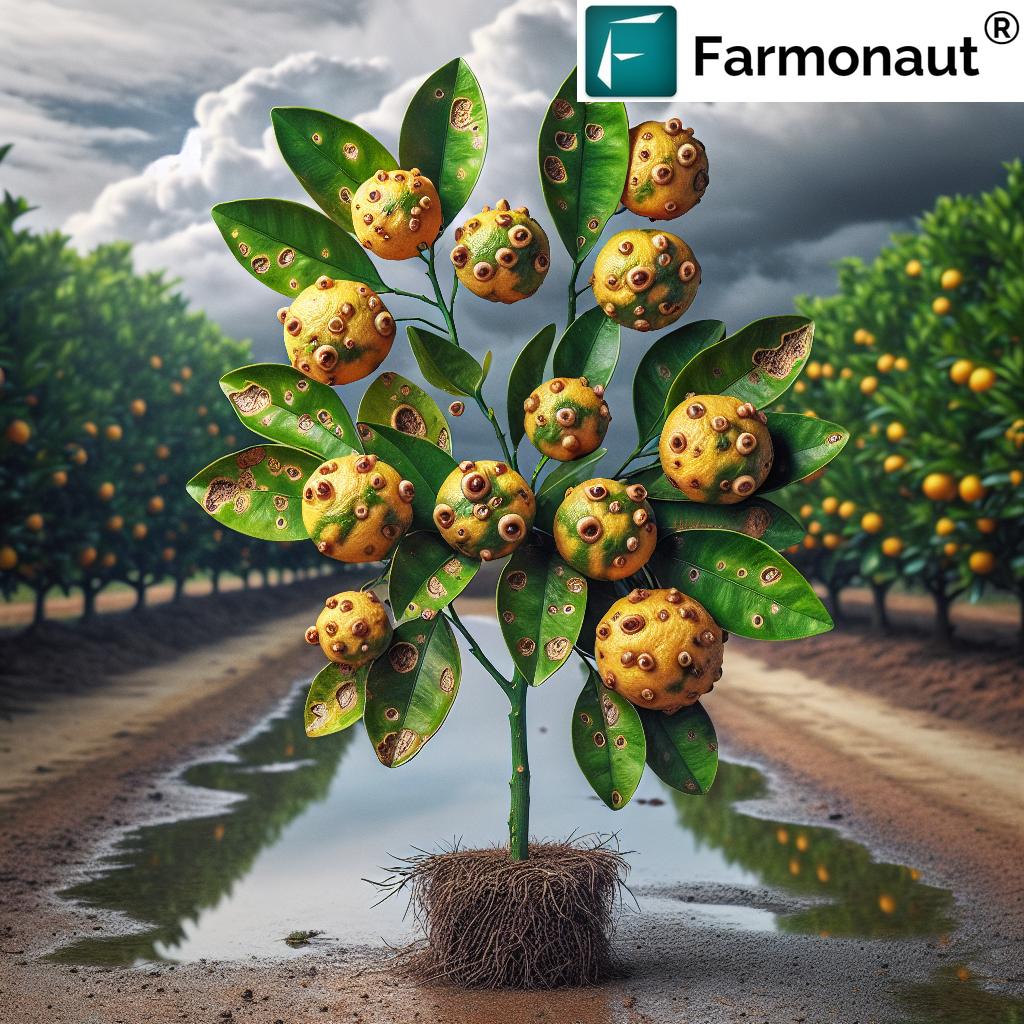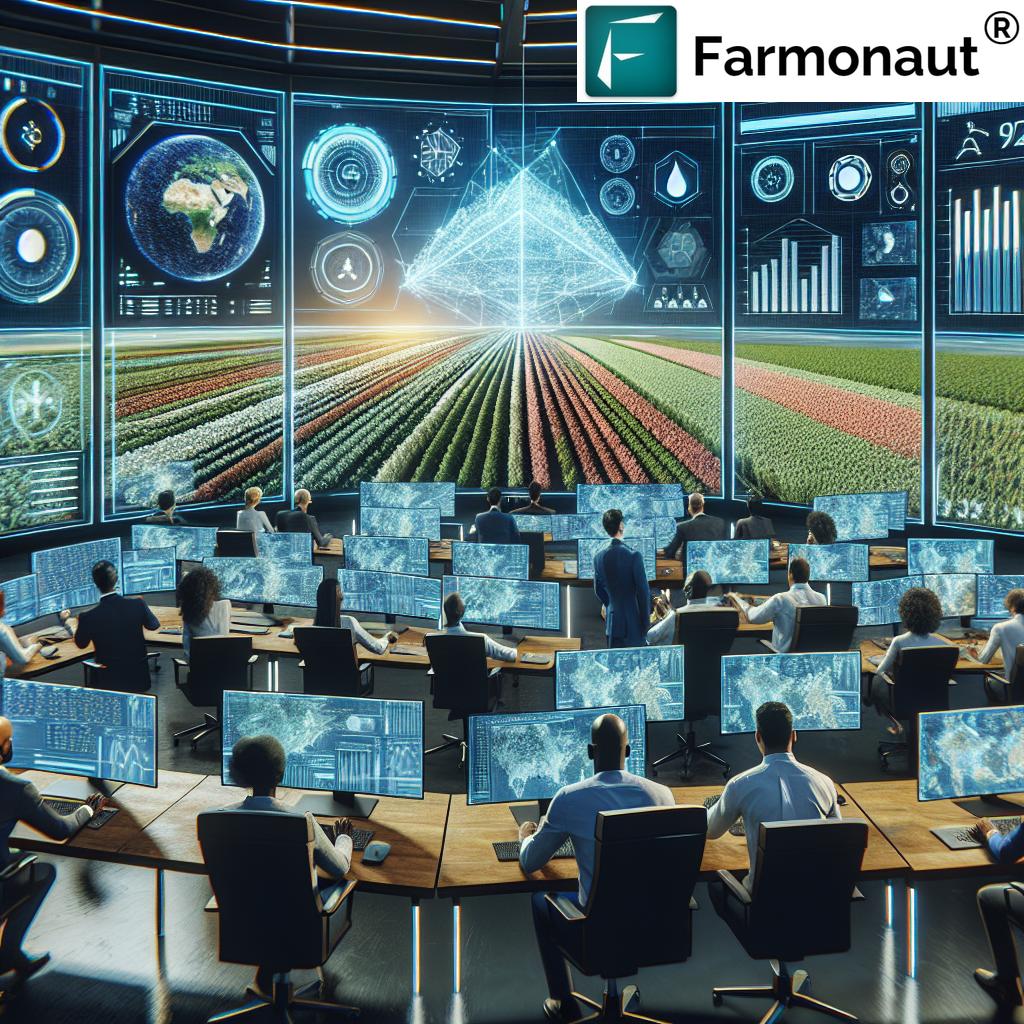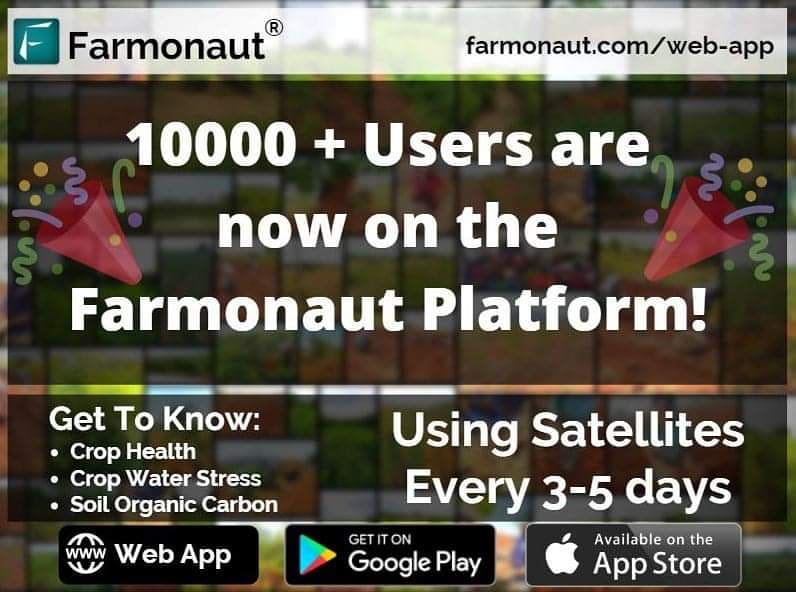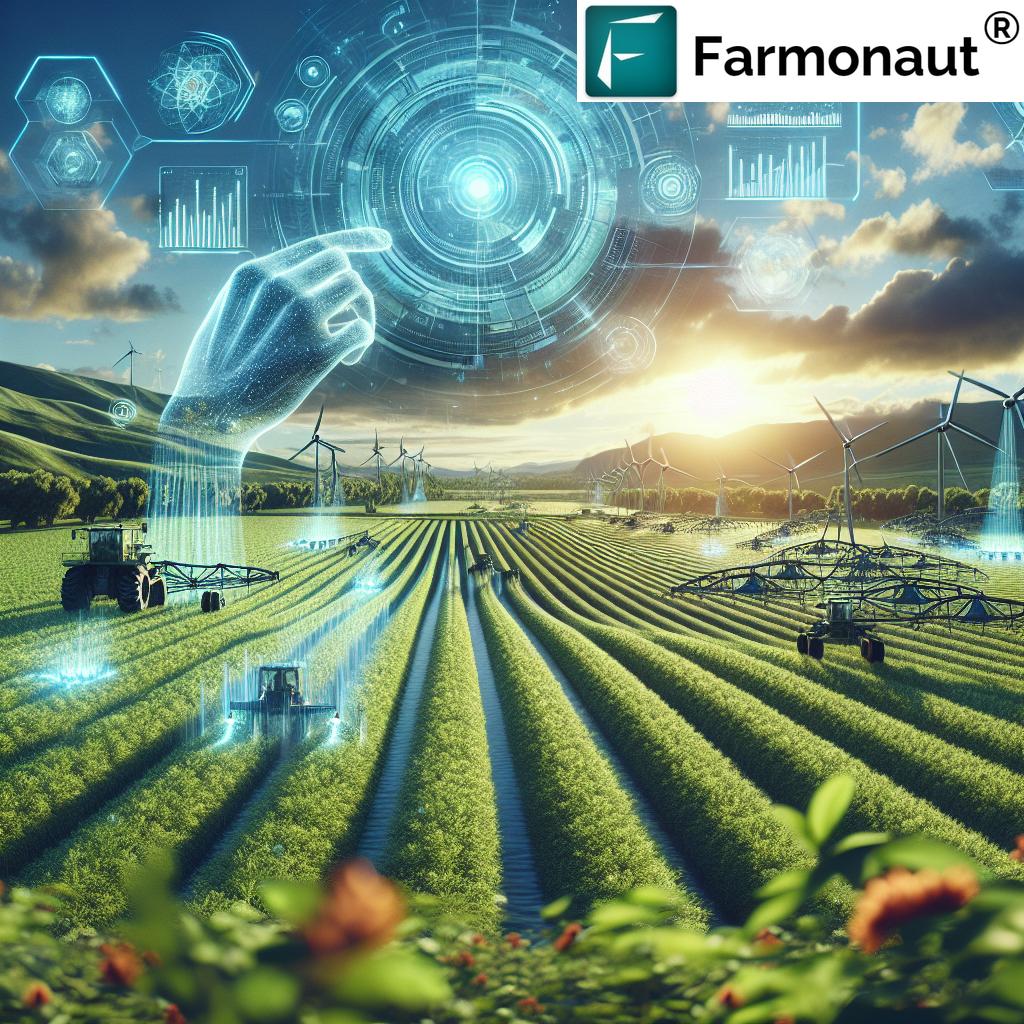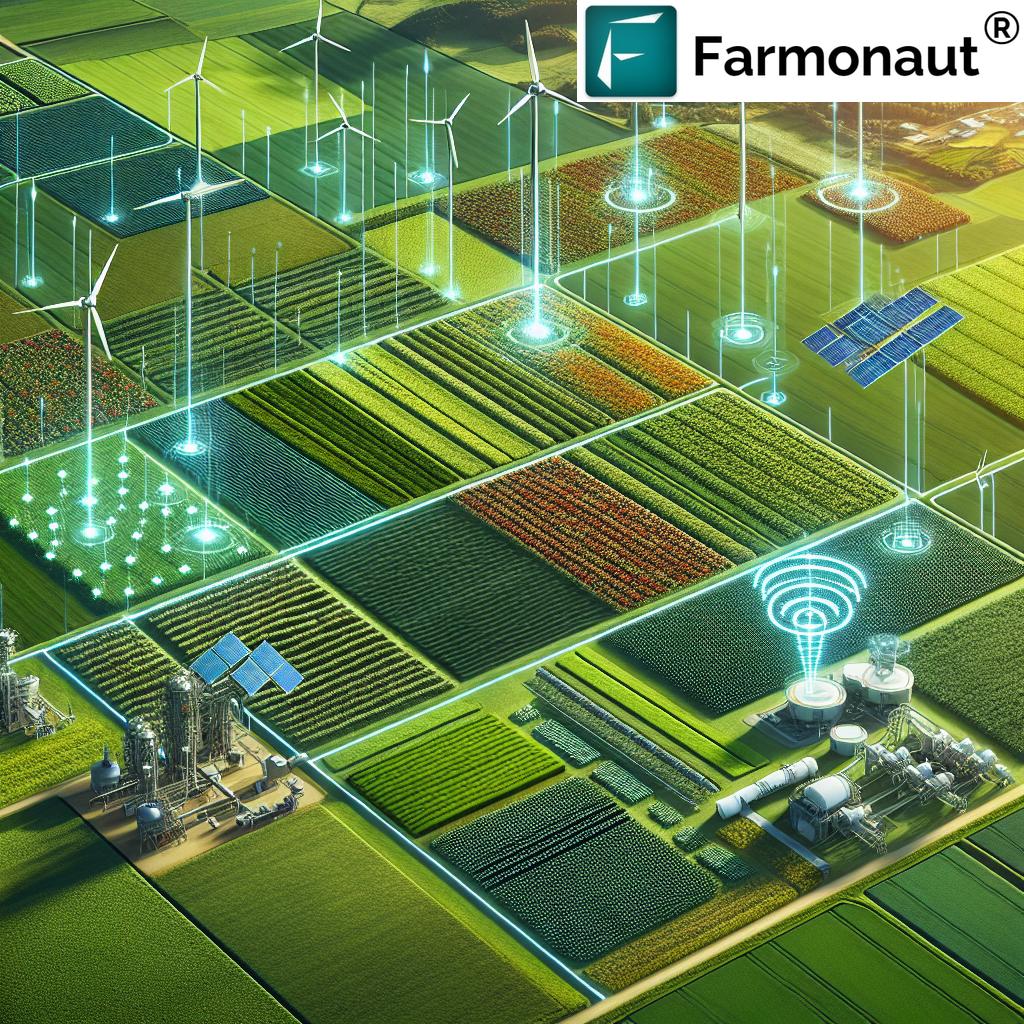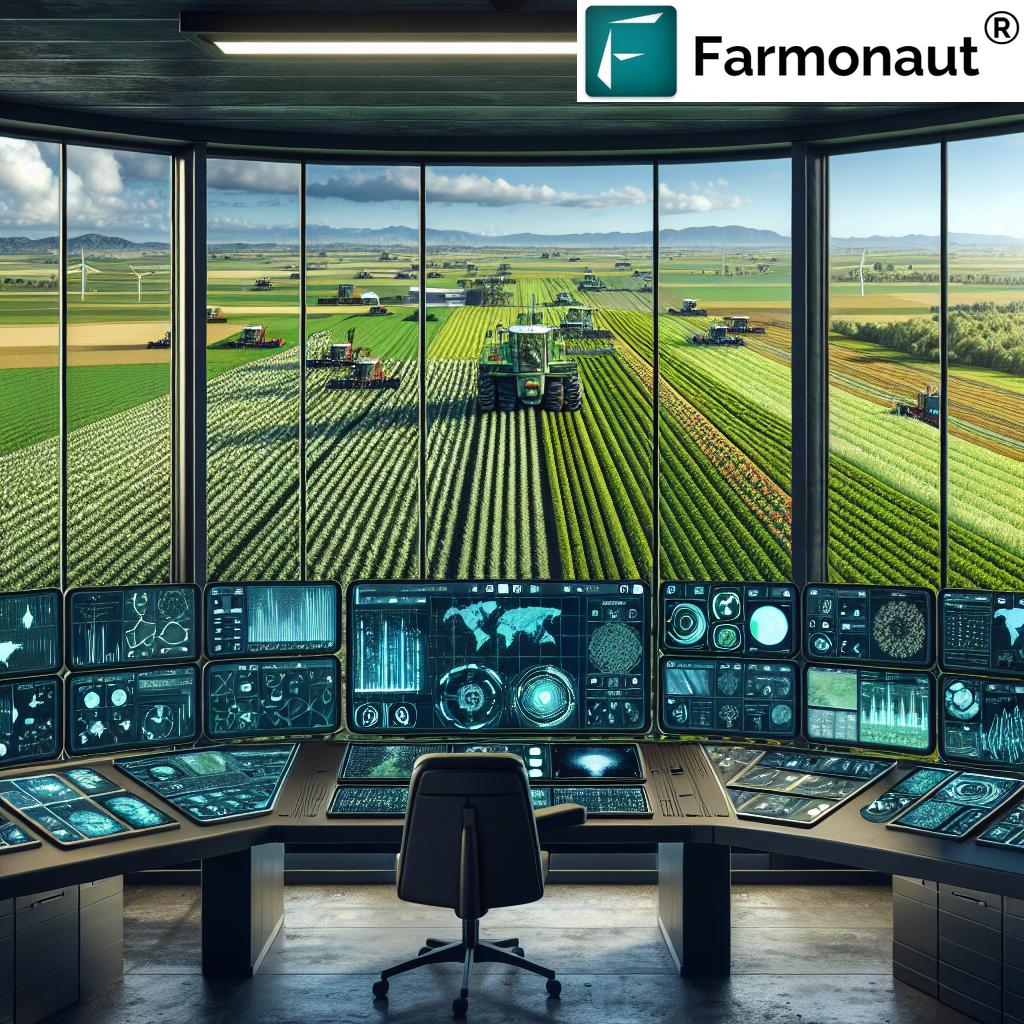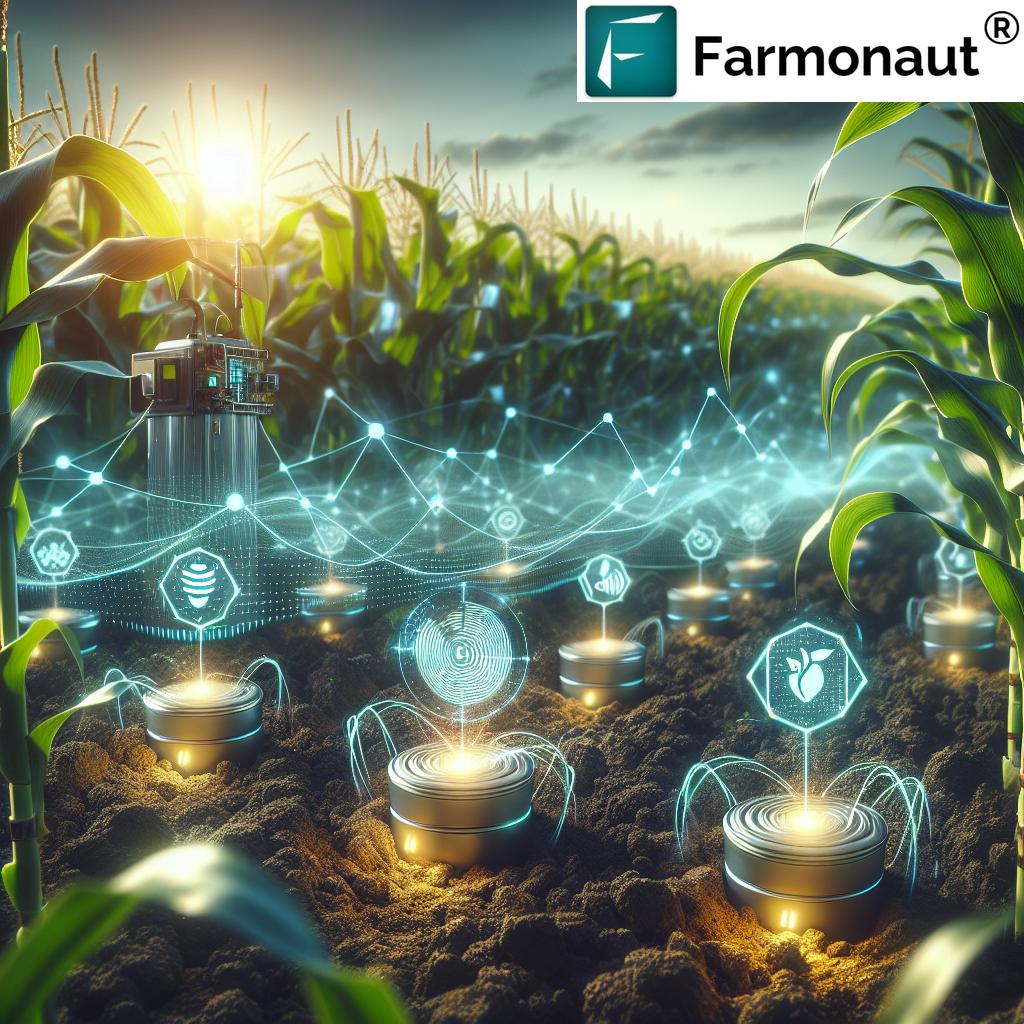Precision Agriculture Technologies: 10 Shocking Innovations
Table of Contents
- Introduction to Precision Agriculture
- Trivia
- Comparison Table of Precision Agriculture Innovations
- Precision Agriculture Technologies: 10 Shocking Innovations
- Benefits of Precision Agriculture & Smart Farming Technologies
- Farmonaut: Advancing Affordable Precision Agriculture
- Recent Developments & Future Outlook
- FAQ: Precision Agriculture Technologies
Introduction to Precision Agriculture
Precision agriculture, often called smart farming, is transforming the global agricultural landscape. By leveraging advanced technologies like remote sensing, IoT, GPS-driven machinery, variable rate applications, robust data analytics, and sophisticated sensors, we are equipped to make data-driven decisions that optimize every aspect of the farming process. The central goal is clear: to maximize yields, reduce input costs, and promote sustainability by tailoring farming practices to the specific needs of each field, crop, and even individual plant.
Today’s farmers are no longer limited to intuition and manual observations. Instead, we utilize satellite imagery, machine learning, automated equipment, and data analytics for crop management to adapt to rapidly changing field conditions. These innovations not only promote more efficient and cost-effective agriculture, but also help us meet the demands of a growing population while reducing our environmental impact.
In this comprehensive guide, we’ll explore the ten most shocking and ground-breaking innovations fueling the precision agriculture revolution, and see how platforms like Farmonaut empower us to harness these advancements at scale.
Comparison Table of Precision Agriculture Innovations
For those of us keen to understand how each precision agriculture technology stacks up, the following table compares the top 10 innovations based on their utility, estimated cost, primary benefit, technology type, and real-world impact. This snapshot helps us choose the most suitable smart farming technologies for our specific needs.
| Innovation Name | Brief Description | Estimated Cost | Key Benefit | Technology Type | Real-World Impact |
|---|---|---|---|---|---|
| GPS & Auto-Guidance Systems | Precise navigation of field equipment with location data | $$ – $$$ | Up to 25% fuel & input savings | GPS, Guidance Software | ~80% adoption (large row-crop farms, US/EU) |
| Variable Rate Technology (VRT) | Automates inputs application based on field conditions | $$$ | 10–15% average input reduction | Control Units, Sensors, Analytics | ~60% adoption in advanced markets |
| Remote Sensing & Drones | Aerial field imagery for crop & soil analytics | $$ | Early detection of stress & pest issues | UAVs, Satellite, Cameras | Growing; ~30–40% modern farms (NA/EU/IN) |
| Data Analytics & Machine Learning | Optimizes decisions via large unified datasets | $$–$$$ (platform fees) | Yield increase up to 20% | Analytics Platforms, AI | Adoption rising swiftly |
| Internet of Things (IoT) | Connects sensors/devices for real-time monitoring | $$ | Improved resource management, 30% water savings | IoT Hardware, Networks | ~15% large-scale adoption; growing fast |
| Precision Irrigation Systems | Automated water supply using sensor control | $$$ | Up to 40% water use reduction | Smart Controllers, Moisture Sensors | Widespread in high-value/greenhouse |
| Unmanned Aerial Vehicles (UAVs) | Detailed aerial field surveys with specialized cameras | $$ | Faster, granular crop/soil insights | Drone Hardware, Imaging | ~1 in 5 modernized farms |
| Precision Seeding | Automated depth and spacing of seeds | $$–$$$ | Up to 10% yield boost, less seed waste | Seeders, Planters, GPS | Standard in row crop production (US, EU) |
| Precision Livestock Farming (PLF) | Monitors animal health/behavior digitally | $$–$$$ | 10–15% increase in animal productivity | Cameras, Sensors, Wearables | ~20% adoption in dairy/pig/poultry |
| Leaf Sensors | Real-time moisture detection in leaves for irrigation | $–$$ | Enables 25–40% irrigation savings | Biosensors | Emerging, high potential in dry regions |
Precision Agriculture Technologies: 10 Shocking Innovations
In the rapidly evolving world of farming, leveraging precision agriculture technologies is no longer a futuristic vision—it’s the present reality. Below, we uncover and explain the ten most groundbreaking technologies disrupting modern agriculture, all designed to help us optimize inputs, reduce waste, and drive productivity through data, automation, and smart systems.
1. Global Positioning System (GPS) & Auto-Guidance Systems
GPS technology forms the backbone of precision agriculture by providing accurate location and navigation information throughout our fields. By integrating high-precision GPS signals with auto-guidance systems on tractors and equipment, we enable precise, consistent operations—minimizing overlaps, missed areas, and resource wastage during planting, fertilizing, and harvesting.
- Key benefits: Fuel savings, reduced operator fatigue, efficient input application.
- Allows automation of field operations by sending real-time positioning data to machinery, reducing labor and human error.
- Essential for the success of variable rate applications and precision seeding.
Did you know? GPS-guided tractors are standard equipment in over 80% of U.S farms, showcasing the massive adoption of auto-guidance in large-scale agriculture.
2. Variable Rate Technology (VRT) in Farming
VRT is a revolutionary system that enables us to apply seeds, fertilizers, and pesticides at variable rates based on detailed analysis of field zones—no more “one-size-fits-all” applications. This technology combines real-time sensing, data analytics, and advanced control systems to ensure that each zone receives the exact amount of inputs it needs for optimal growth.
- Drastically reduces input costs and environmental impact by reducing overlap and applying only what’s necessary.
- Greatly enhances crop yields by avoiding under- and over-application.
- Integrates seamlessly with precision seeding and harvest equipment.
Learn more about variable rate technology in farming on Wikipedia.
3. Remote Sensing in Agriculture & Drones for Crop Monitoring
Remote sensing has revolutionized our ability to monitor field conditions, crop health, and soil properties with unprecedented accuracy and frequency. By leveraging satellite imagery and drones equipped with specialized cameras, we can detect issues such as pest infestations, nutrient deficiencies, and water stress before they’re visible to the naked eye.
- Drone technology allows us to gather high-resolution, real-time aerial views for proactive farm management.
- Multispectral cameras provide valuable NDVI and thermal imaging analytics, enabling timely, data-driven decisions.
Platforms like Farmonaut make satellite-based crop health monitoring affordable and accessible even to smallholders. Read more: Crop, Plantation & Forest Advisory Benefits.
4. Data Analytics & Machine Learning for Crop Management
With the explosion of data from satellites, sensors, and field equipment, our ability to analyze large datasets using machine learning has dramatically improved. We can now identify patterns, optimize planting schedules, predict future yields, and recommend the most effective agronomic practices tailored to specific field conditions.
- Farmonaut‘s AI-based advisory, Jeevn AI, leverages these capabilities to generate personalized, real-time farm advice.
- This leads to more accurate yield estimation, early identification of pest outbreaks, and smarter resource allocation.
For seamless farm and resource management integrated with satellite, AI, and blockchain data, visit our API & developer docs.
5. Internet of Things (IoT) and Smart Farming Solutions
The Internet of Things (IoT) is redefining farm management with an interconnected network of sensors and smart devices. These devices continually track soil moisture, weather, equipment performance, and crop conditions—allowing us to automate tasks, schedule maintenance, and optimize irrigation schedules.
- IoT enables automated irrigation systems, real-time pest alerts, and farm-wide monitoring for better decision-making.
- Integrates data from soil health monitoring sensors and weather stations, feeding analytics that optimize every input.
Interested in resource optimization at scale? See our fleet and resource management solutions.
6. Precision Irrigation Systems
Irrigation is among the highest cost and most critical inputs in agriculture. Precision irrigation systems use data from soil moisture sensors and weather analytics to automate water delivery, ensuring water is applied only where and when it’s needed—significantly reducing waste and maximizing efficiency.
- Can deliver up to 40% water savings through zone-wise, real-time control.
- Integrates with IoT networks and remote sensing for truly smart, sustainable water management.
Explore precision irrigation capabilities with Farmonaut’s satellite-based platform.
7. Unmanned Aerial Vehicles (UAVs) for Aerial Field Analysis
UAVs or drones are making a significant impact by offering detailed aerial views of our fields, equipped with specialized cameras that assess crop health, detect stress, and guide precision interventions.
- Drones can detect pest infestations and nutrient issues early, directly influencing in-season management.
- They make area mapping, crop surveillance, and even seeding on challenging terrain possible with minimal manual labor.
Check out how drones for crop monitoring work as part of our affordable precision farming solutions.
8. Precision Seeding Technology
Unlike broadcast seeding, precision seeding plant seeds at exact depths and spacings using GPS-driven equipment, optimizing plant-to-plant distance and maximizing every unit of input. This not only increases yield potential but also improves resource use and reduces seed waste.
- Automatically adjusts seeding rates based on real-time field data.
- Adapts to diverse soil conditions and crop varieties.
For scalable, large-scale farm management, discover our agro admin app.
9. Precision Livestock Farming (PLF)
PLF applies sensors, cameras, wearables and AI to monitor animal health, reproduction, welfare, and environmental impact. By continuously collecting data on each animal’s behavior and health, we enable proactive management, improved productivity, and better animal welfare.
- Detect diseases and reproductive cycles early, maximizing yield and resource efficiency.
- Reduce environmental footprint through more precise use of feed, water, and medication.
For advanced traceability and supply chain transparency, see Farmonaut’s blockchain-based traceability solution.
10. Leaf Sensors
Leaf sensors directly measure water loss and moisture levels in plant leaves, providing real-time, hyperlocal data to inform precision irrigation. This technology ensures that crops only receive exactly what’s needed—improving water efficiency, limiting stress, and boosting yields.
- Enable automated irrigation control cycles based on actual plant need.
- Can reduce overall irrigation water use by 25–40%.
Benefits of Precision Agriculture & Smart Farming Technologies
The collective adoption of these technologies yields benefits that reach far beyond the bottom line.
- Increased Efficiency and Productivity: By optimizing each farm operation, waste is minimized and resource use is maximized, directly impacting yields and profitability.
- Cost Savings: Targeted input application and automation lead to substantial input cost reductions, from fuel to water, fertilizer, and seeds.
- Environmental Sustainability: By reducing runoff, overapplication, and unnecessary travel, smart farming promotes a more sustainable agricultural future.
- Improved Decision-Making: Access to real-time data, analytics and AI advice means smarter decisions, reduced risk, and higher returns.
- Enhanced Transparency & Supply Chain Trust: Blockchain-based systems like Farmonaut’s traceability tool provide end-to-end visibility—a critical requirement for modern food systems.
- Improved Access to Financing: Satellite-based verification and analytics (e.g., for crop loans & insurance) help farmers gain trust with lenders while reducing fraud.
Farmonaut: Advancing Affordable Precision Agriculture
Among the platforms pushing the boundaries of affordable precision agriculture is Farmonaut. Its unique approach—combining satellite imagery, artificial intelligence, blockchain, and machine learning—addresses virtually every major challenge in modern agriculture.
Farmonaut’s Key Offerings
- Satellite-Based Crop Health Monitoring: Multispectral imagery for actionable insights on vegetation health, soil moisture levels, nutrient status, and pest/disease outbreaks.
- AI-Powered Jeevn Advisory: Tailored, real-time crop advice based on satellite data, machine learning, and local conditions.
- Blockchain Traceability: Transparent, fraud-resistant tracking for food, fiber, and other agri products throughout the supply chain.
- Fleet & Resource Management: Optimize equipment deployment, fuel use, and logistics—leading to reduced operational costs.
- Carbon Footprinting & Sustainability: Real-time monitoring of emissions supports compliance and climate-smart agriculture. Learn more about carbon footprinting.
- Flexible Access & APIs: Via web, Android, iOS, and API integration, with scalable packages for individual farmers, cooperatives, agribusinesses, and government agencies.
Unlike traditional systems, which can be out of reach for small and medium farmers, Farmonaut’s satellite-based approach means there’s no need for costly hardware or field sensors. With its modular business model, users simply choose the services they need and expand as their operations grow, enhancing food security and environmental performance globally.
Ready to experience affordable, data-driven farming? Try Farmonaut’s mobile and web app, or integrate advanced analytics in your own platform with our API.
Recent Developments & Future Outlook for Precision Agriculture
The field of precision agriculture continues to evolve. Some of the most noteworthy developments include:
-
Farming tech showcased at CES: Green innovations on the global stage
– highlighting rapid advancements, from autonomous drones to smart sensors, bringing precision tools into mainstream farming. -
New game-changing approaches – including regenerative systems and next-gen analytics—are helping us address pressing challenges like resource depletion, labor shortages, and climate change. -
AI-enabled regenerative agriculture – cloud-based platforms leverage precise monitoring to support biodiversity, improve soil, and enhance long-term sustainability.
Looking ahead, we expect even faster innovation. Nanotechnology, nanosensors, and AI-driven analytics will enable even more granular, real-time, and predictive precision—all at lower cost and higher scale.
As these smart farming technologies become more accessible, adoption will spread from large agribusinesses to smallholders around the world—delivering the benefits of sustainable farming practices and climate resilience to all.
Explore Further:
- Carbon Footprinting for Sustainable Agriculture – Track and reduce your farm’s carbon output using Farmonaut’s real-time tools.
- Agro Admin App for Large-Scale Farm Management – Monitor, analyze, and manage plantations or aggregated plots seamlessly from web or mobile.
- Crop Loan & Insurance Verification with Satellite Analytics – Streamline financial verification for farm lending and insurance with data-backed transparency.
Frequently Asked Questions (FAQ): Precision Agriculture Technologies
What is precision agriculture?
Precision agriculture is the application of advanced technologies—like GPS, sensors, data analytics, drones, and machine learning—to monitor and optimize every aspect of farming. This approach allows us to manage fields based on detailed, real-time data, improving yields, lowering costs, and promoting sustainable farming practices.
How does remote sensing help in agriculture?
Remote sensing—through satellite imagery and drones—provides high-frequency, high-resolution data to detect crop stress, soil moisture, pest infestations, and nutrient deficiencies. Early detection enables targeted interventions, promoting healthier crops and greater productivity.
What are the main benefits of adopting smart farming technologies?
The major benefits include increased efficiency, reduced resource waste, improved yields, cost savings, environmental sustainability, and better risk management. Advanced analytics, automation, and traceability tools further support transparency and financial security for farmers.
Are these precision agriculture technologies affordable for all farmers?
Traditionally, many precision technologies were expensive, but platforms like Farmonaut are lowering the barrier by providing affordable satellite-based monitoring and modular subscription packages, making advanced tools accessible to farms of all sizes.
What’s the future of precision agriculture?
The future is bright: expect increased adoption of AI, nano-sensors, and integration with fintech, supply chain, and compliance tools, creating an even more data-driven, resilient, and sustainable agricultural sector worldwide.
Conclusion: Embracing the Future of Smart Farming
By integrating technologies like remote sensing, data analytics, IoT, machine learning, advanced GPS equipment, and satellite monitoring, we are ushering in a new era of productivity and sustainability. Platforms like Farmonaut continue to empower farmers—big and small—by democratizing access to data-driven decisions and affordable, cutting-edge farm management solutions. Embrace these innovations and lead the way into the future of sustainable, precise, and profitable farming!


